Oil recovery and clean-up techniques. What to do when faced with a spill
Oil spilled in the ocean, creating what is known as oil slicks, is highly hazardous because the emulsion caused by wave action is very resistant.
There are many questions arising from oil spills at sea. How do you clean up an oil spill? How long will an ecosystem affected by an oil spill take to recover? Why are oil spills so hazardous? How much oil is spilled at sea?
The fact is, oil spilled in the ocean, creating what is known as oil slicks, is highly hazardous because the emulsion caused by wave action is very resistant. If not dealt with swiftly, it can soon reach coastlines and beaches, thereby multiplying the effects of the catastrophe.
The time an ecosystem takes to recover from an oil spill depends on its size. The effects of a small spill can take 15 years to completely disappear, while for a larger spill this may take a lot longer. The damage an oil spill can cause is often the collapse and immediate death of a wide range of marine species, as well as water pollution which can last for years on end, preventing reproduction and the recovery of the ecosystem.
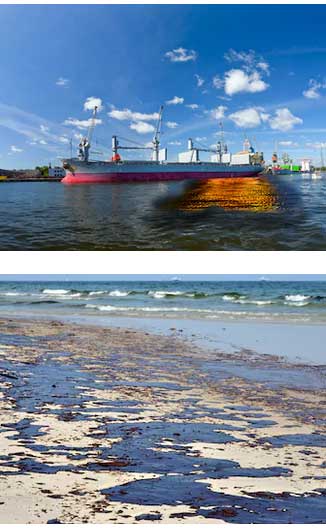
How do you clean up an oil spill in the sea?
Faced with such a catastrophe, swift action is required. For this reason, most oil companies, port authorities, marinas, industries and other companies operating in ports and along the coast prefer to take preventive action, rather than wait for the accident to happen.
Faced with such a catastrophe, swift action is required. For this reason, most oil companies, port authorities, marinas, industries and other companies operating in ports and along the coast prefer to take preventive action, rather than wait for the accident to happen. There are a myriad of solutions depending on the location, the type and the size of the spill.
Any response to a spill will always include some, if not all, of the following phases:
- Spill containment, how to choose an oil containment booms
- Mechanical recovery of the spill, using skimmers
- Temporary storage, using both towable bladders or port-based storage tanks
- Final storage or elimination of the recovered oil
- Complete clean-up of the affected area, using a variety of manual and/or chemical means, some of which may or may not be permitted by local legislation
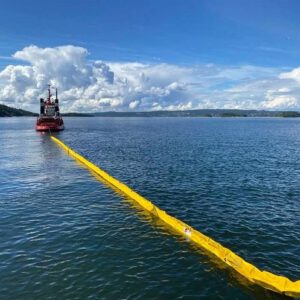
What techniques are used to clean up an oil spill at sea, in industry or in other areas?
While the largest, headline making oil spills tend to happen at sea, industry and other sectors also experience spills, either accidentally or continuously.
Offshore oil recovery techniques
The procedure for recovering oil spills offshore is usually via the containment, mechanical recovery and transport to port of the oil.
The equipment used can be summarised as follows:
- Large seilf-inflatable booms and inflatable containment booms. Both are deployed and recovered using hydraulic reels.
- Skimmers for recovering oil on water. The recovered oil is pumped to floating tanks which are then towed to port where the oil can be stored awaiting its final treatment.
- The MOS Sweeper dynamic recovery system is Markleen’s latest technological development. The system consists of a multiple boom herringbone design, deployed from a single vessel. One of the many advantages of the MOS Sweeper is that it simultaneously contains and recovers the oil.
- Small scale oil spills at sea can be recovered using marine oil sorbents.
Coastal and beach oil spill recovery techniques
Coastal oil spill clean-up involves a number of different operations as two different natural environments are affected by the oil slick: the sea itself and the coastline, often including beaches.
Oil spill recovery and clean-up techniques can include some or all of the following professional equipment:
- Containment of the oil using medium-sized inflatable booms or self-inflatable booms such as the Markleen Seamaster. Depending on the size and location of the spill, cylindrical solid floatation booms and flat solid floatation booms can also be used. The MOS Sweeper is of course also suitable for this type of spill, which as mentioned earlier, oil spill is recovered using hydrodynamics. If the spill affects a beach, the Markleen S Series beach sealing boom should be used to contain the oil in the intertidal area. As can be seen, the nature of the spill is of less importance than the location where it occurs. So depending on the conditions at the location of the spill, we can advise you as to the most suitable type of containment boom to use.
- Oil recovery is best performed using MS 20 skimmers or MS 30 skimmers, depending on the amount of oil to be recovered.
- The next step after oil spill recovery is to transfer the oil to land based tanks such as the Markleen EasyTank – Flexible bladders for transporting oil recovered following a spill at sea – or Markleen AutoTank – a fast and economical solution for the temporary storage of oil. If the spill is located several miles away from the coast, floating bladders may be necessary to transport the oil to land.
- To complement the use of mechanical containment and recovery equipment, we can also use sorbent booms to contain and absorb the oil spill, which are then sent off for waste processing.
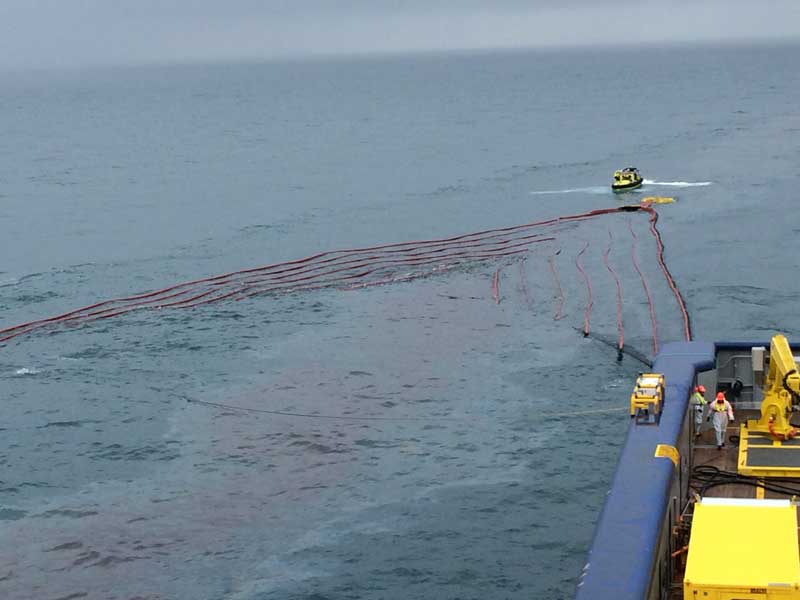
Port and harbour oil spill recovery techniques
Oil spill preparedness is vital both in small marinas and in large ports with a high traffic density of large vessels.
Faced with the inevitable spills occurring in ports and harbours, whether it be crude oil or light fuel, the equipment used will depend on volume and can be summarised as follows:
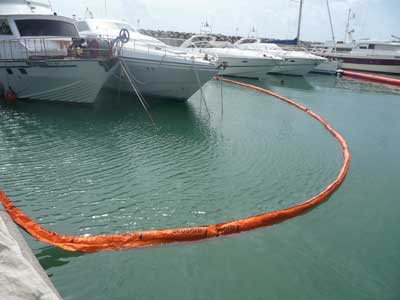
- In rough conditions, the same equipment used for a coastal spill may be required, but otherwise, in the relatively calm conditions of a port, medium-sized solid floatation containment booms may be used. In many ports, including private ports, permanent booms such as the Markleen P Series, are used in preparedness for an accident.
- To recover oil from the water in ports and harbours, smaller skimmers may be used, such as the Markleen MS 10 and MS 20 MultiSkimmers.
- As regards temporary storage, land based tanks such as the Markleen EasyTank and AutoTank are used to hold the recovered oil before it is sent away for waste treatment.
- And for oil and fuel spilled in harbours we can also employ a wide range of oil sorbents, including skirted sorbent booms, which are widely used in marinas, as well other types of containment boom.
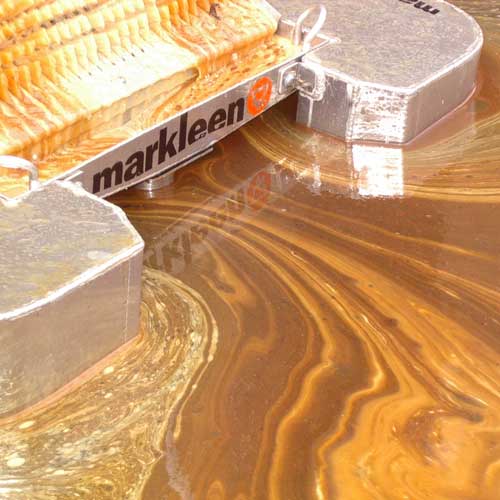
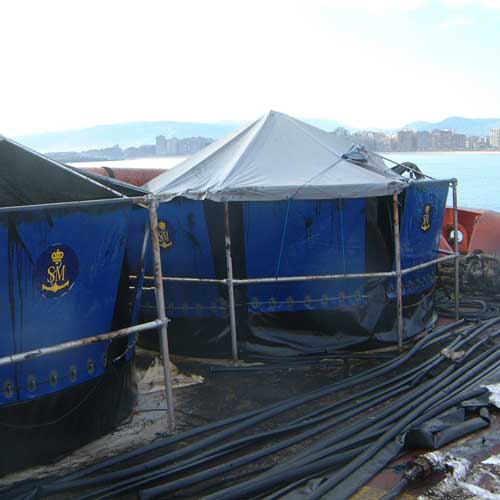
Oil spill recovery techniques in rivers and lakes
Oil spills of course do not occur only at sea, and rivers and lakes can also be affected by this type of catastrophe, albeit usually to a lesser extent.
Oil spill recovery and clean-up equipment used in fresh water can be summarised as follows:
- Small containment booms such as the Markleen A Series, especially the A 500 containment boom.
- Small oil skimmers such as the Markleen MS 10 skimmer.
- Land-based temporary oil storage tanks
- In general, the use of oleophilic and hydrophobic oil sorbents is highly recommended
Oil spill recovery techniques in industry
In industry many small scale oil spills happen daily both within a company’s premises and sometimes also contaminating the surrounding area. Oil recovery and clean-up equipment used in industry can include the following:
- In factories with water tanks where a layer of oil forms over time, small skimmers such as the pneumatically driven Markleen MS 10 are ideal to keep the tank clean.
- For spills on floors and on water in industrial environments, a wide range of industrial sorbents are used.
- In hydro-electric power generation plants in mountainous environments, spills are commonly contained with small or medium-sized containment booms and skimmers, as well as industrial sorbents.
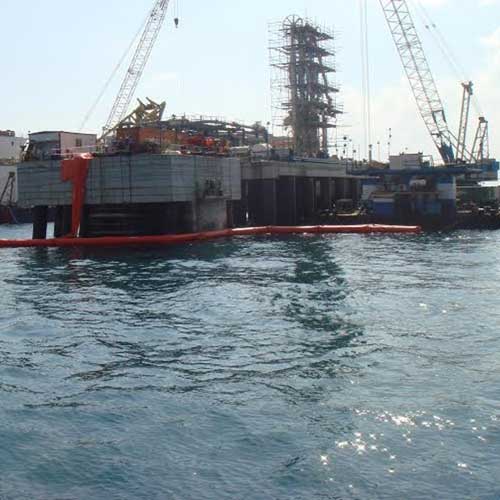
Clean-up techniques for port construction and dredging work
While these techniques are not related to oil spill recovery at sea, we feel it is relevant to mention them in this article by way of introduction. The disturbing of sea water and the generation of a large amount of sediments during port construction and dredging work calls for measures to be taken to contain material in suspension and prevent it from spreading to sensitive areas nearby.
- For these operations, the product used is silt curtains or turbidity barriers, which contain the sediments using a made to measure solution consisting of two parts: the buoyancy element and the skirt, the depth of which will depend on the depth of the water at the location where it is used.
